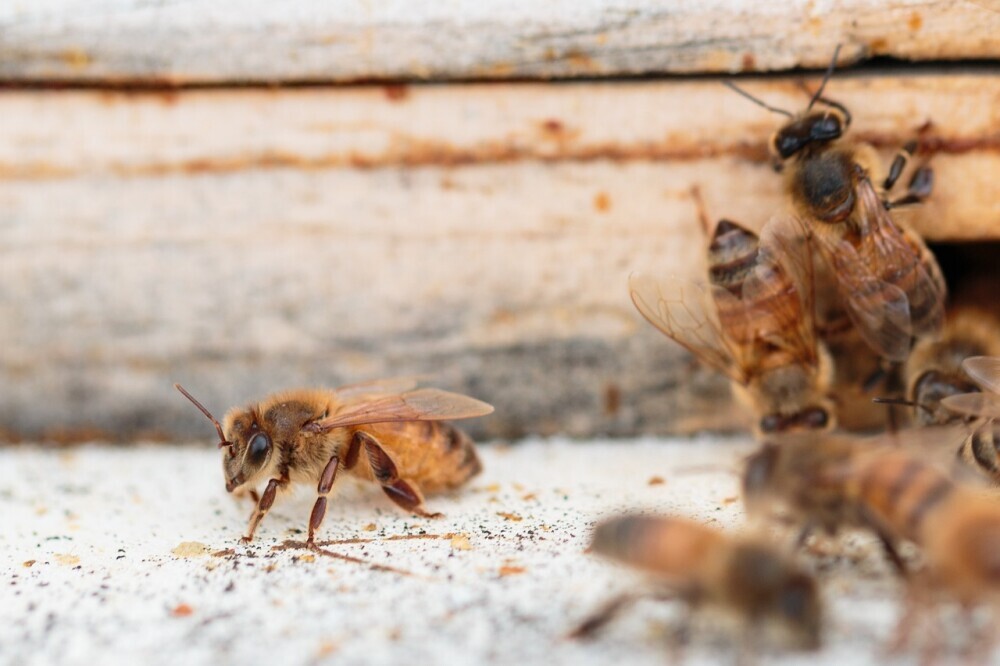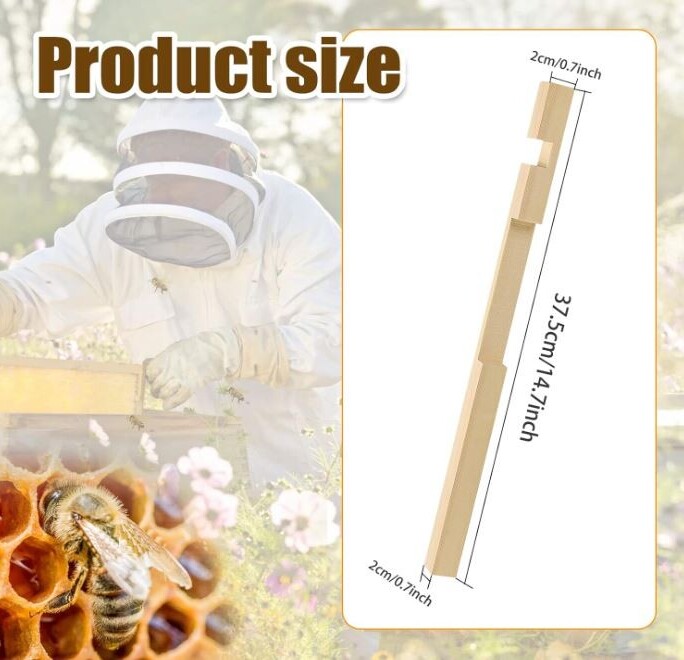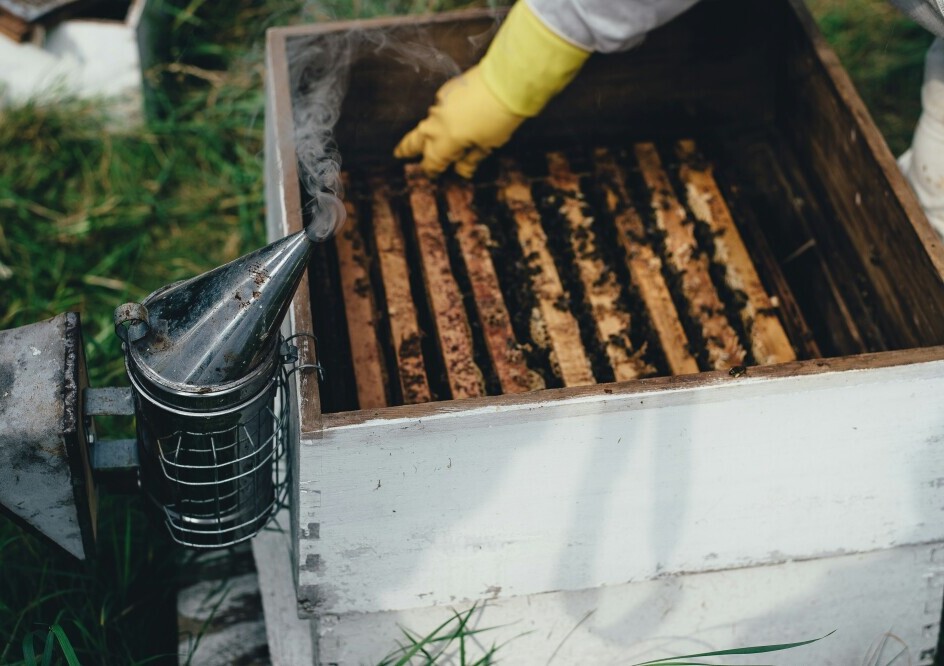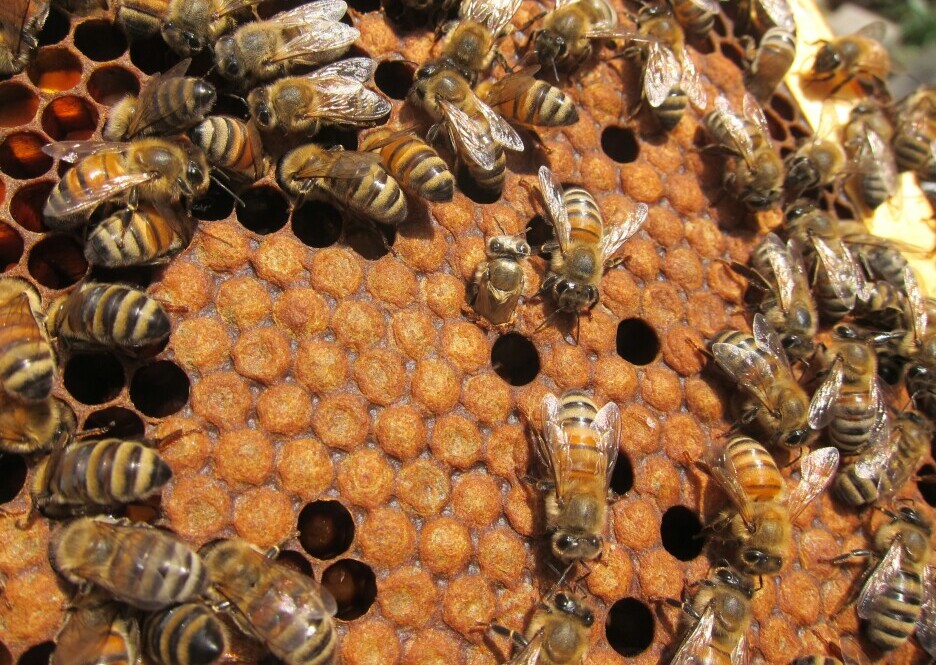Hive robbing is when bees from a strong colony invade a weaker hive to steal its honey. This leaves the robbed hive, already vulnerable, at the risk of collapse. Understanding this starts with knowing that bee colonies are drawn to easy sources of food, especially when nectar availability is low.
Robbing often kicks off during dearth periods when there aren’t many flowers blooming around. Stronger colonies, driven by their survival instinct, look for weaker hives to target, leading to crafty invasions where they sneak into other hives for a sweet raid.
This behavior is different from other aggressive tendencies in bees due to its targeted nature. Unlike random acts of aggression, robbing is a calculated move made by the intruding bees, often resulting in chaotic and violent scenes around the hive entrance.
Knowing what prompts robbing is crucial for any beekeeper. If your backyard is buzzing with multiple hives, it’s all about finding balance so no hive feels the need to take drastic measures. This means paying attention to the environmental conditions, food supply, and hive health year-round.
Prevention is all about early recognition and a proactive attitude, so spotting signs before robbing happens can save your bees from this turmoil. It also means creating a hive environment that’s vigilant and prepared to fend off unwanted visitors.
Identifying Early Signs of Hive Robbing
Spotting early signs of hive robbing can save your bees a whole lot of trouble. One of the first clues is unusually aggressive bee behavior around the hive. You might notice frantic flying near the entrance or bees fighting in the air. It’s like a mini war zone, and it’s hard to miss.
A tell-tale visual sign is bees crawling all over the hive, even where they normally shouldn’t be. If you see bees zigzagging at your hive entrance or trying to sneak into cracks or corners, something might be up.

Another indicator is the pile-up of dead bees near the entrance or a noticeable amount of wax on the ground, which suggests a struggle. This kind of debris isn’t something you’d typically see without some hive drama going on inside.
Keep an ear out too. An increase in high-pitched buzzing could mean bees are stressed and trying to fend off intruders. Listening can be just as informative as watching—bumbling, chaotic sounds often mean trouble.
Sometimes beekeepers mistake normal hive activity for robbing. During peak foraging times, a hive’s entrance can seem hectic. Get to know your bees’ usual patterns so you can catch these disturbances with a keen eye. Experience helps tell the difference between hustle and full-on panic mode.
Preventive Strategies to Protect Your Hive
Keeping your hives out of the robbing spotlight starts with solid preventive measures. First, consider how your hives are set up. It’s wise to space them so they aren’t right on top of each other, which helps reduce competition and temptation among colonies.
A key part of prevention is managing hive entrances. Keep them small, especially if you know there’s potential for trouble. Smaller entrances make it harder for invaders to bully their way in and force the resident bees to battle them off.

Location is another crucial factor. Position hives in spots where weather conditions leave them undisturbed and external pressures from other colonies or wildlife are minimized. You don’t want them too exposed, where robbers can just swoop in at any chance.
Another tip is to avoid spilling sugar syrup or honey near the hives. Sticky surfaces attract bees like a magnet—make clean surroundings a habit to prevent drawing unnecessary attention to your apiary.
Also, be strategic about inspections and feeding times. If nearby hives catch wind of a feast, they might decide to crash the party. Be discreet when providing extra resources, especially during dry spells when nectar’s scarce.
Keeping colonies strong is your best defense. Healthy, robust hives are better at fending off robbers, so regular health checks to address any weaknesses can make a huge difference in preventing raids.
Safeguarding Your Hive: Techniques and Tools
Using tools to protect your hive from robbers makes life easier for both you and your bees. A robbing screen is one of the top choices. It confuses invading bees by creating an extra layer of security while letting resident bees get in and out just fine.
Entrance reducers are another effective line of defense. They limit the size of hive entrances, making it tougher for intruders to push their way in. By making their moves more predictable, entrance reducers give your bees a fighting chance to defend their turf.
 CHECK OUT PRICING HERE
CHECK OUT PRICING HERE
Natural deterrents can work wonders too. Planting bee-friendly, high-nectar flowers around your yard not only supports your bees’ foraging but also keeps them busy. This reduces their focus on raiding each other’s hives, promoting a BFF-type vibe across your apiary.
Keeping an eye on your hives is critical. You don’t need high-tech gadgets to monitor your bees, but strategic use of simple surveillance—like installing reflective surfaces nearby—can help watch out for unwanted visitors. Reflective surfaces can also deter intruders by confusing them with unfamiliar light and movement.

The name of the game here is being ready for anything. By using the right combination of tools, you create a fortress around your bees that discourages unwanted guests while allowing your colony to flourish. Being proactive means you’re not just reacting when robbing starts; you’re ahead of it.
Managing Hive Health Post-Robbing Incident
If robbing strikes, swift action is crucial for damage control and recovery. Start by securing the entrance to prevent further robber visits. Quickly putting in a robber screen or fully closing the hive entrance for a short period can give your bees a breather.
Once things settle, assess the colony’s health. Check for the queen and evaluate her condition, as she’s pivotal to your hive’s comeback. Make sure she’s there and in good shape, ready to lead her colony back to strength.
Your bees need resources to bounce back. Supplement their honey stores, especially if the robbing left them low. Providing sugar syrup or pollen patties can help replenish what they’ve lost, giving them a fighting chance to regroup.
Don’t ignore the brood. It’s the next generation that ensures the colony’s future. Inspect for any damage to brood combs and take necessary steps to support their growth. A healthy brood means a resilient hive, so nurturing it is key.

Focus on boosting morale. A colony that faces robbing may become stressed and less cooperative. Minimize disturbances and keep the hive environment as calm and stable as possible to allow sounds and scents that indicate safety.
Continued vigilance is essential. Post-robbing, watch closely for any signs of recurring attacks. If robbers sense weakness, they may return, so keep protective measures in place until the colony is back to full strength.
Long-term Considerations for Hive Protection and Management
Planning for the long haul means integrating robbing prevention into your regular hive maintenance. A solid management plan that includes periodic checks and balances helps your hives thrive even when conditions get rough.
Education is a powerful tool. Share the know-how with your fellow beekeepers. Workshops or informal meet-ups can spread effective strategies for robbing prevention, creating a community that’s well-prepared against hive robbers.
Adapt to the seasons. Recognize that changes like weather and nectar availability impact hive behavior. Scheduling your check-ins and management tasks based on seasonal trends ensures your bees get what they need when they need it.

Stay informed about new techniques and tools emerging in the bee world. Continually updating your practices helps sharpen your skills and could introduce methods that enhance how you manage robbing threats.
It’s not just about the bees; keeping yourself updated on bee-friendly climate practices and legislation aids both your hives and the environment. Staying in the loop with ecological considerations bolsters hive health in unexpected ways.
Scaling your protection strategies as you grow your apiary ensures each hive has its tailored barrier against potential robbers. So, whether you have a few hives or a sprawling setup, a flexible approach ensures every colony is secured and thriving.

2 comments on “Preventing And Dealing With Hive Robbing”
Mercy
November 19, 2024 at 4:14 amThis article on preventing and dealing with hive robbing is so helpful! I really appreciate the practical tips you’ve shared for protecting a hive from robbers, especially the advice on reducing entrances and keeping hives strong. The step-by-step approach to handling a robbing situation is clear and reassuring. It’s great to see such detailed guidance for beekeepers looking to safeguard their colonies. Thanks for sharing your expertise—these tips will definitely come in handy!
Randi
November 25, 2024 at 9:04 pmThanks so much! I’m really glad you found the article helpful. Reducing entrances and keeping hives strong can make such a big difference, and I’m happy the step-by-step approach feels reassuring. Wishing you and your bees all the best—let me know if you ever have more questions!